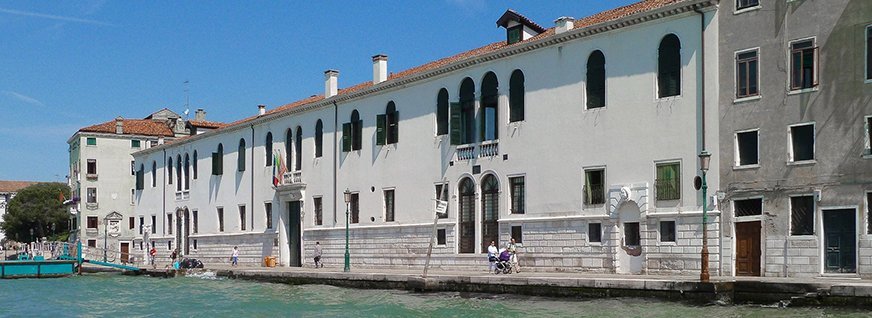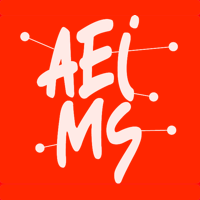Academy of Fine Arts Venice

Artistic Anatomy
Presentation
The course is intended for students in both the three-year undergraduate and two-year postgraduate programmes. For undergraduate students, the lessons will vary by topic and will be scheduled separately for the first and second academic years. In the two-year postgraduate programme, the course will mainly involve research activities based on the foundational training acquired during the undergraduate cycle.
Programme Structure of the course
The course is divided into two distinct phases:
- a)Introductory lessons
- b)Workshop activities with in-depth study of the topic identified for the academic year
The introductory lessons focus on the human body and its representation, considering the discipline as a tool for analysis, understanding, knowledge, and expressive reinterpretation of the human form.
Content
The term "artistic anatomy" unequivocally defines both the methodology and the content of the discipline: the scientific and expressive dimensions coexist and continuously relate to the human body, which, even before becoming an object of analysis, is regarded as the site of existence in space and time. The human body is conceived as "phenomenological"—a living being and a transparent architectural element to be analysed, deconstructed, and reconstructed in order to grasp its essence and intelligibility.
Graphic observation begins with the study of an internal, invisible, structural space and then progresses through osteological and myological analysis, and finally to a volumetric, plastic, and morphological approach. From an initial formal exploration, each student will develop a personal methodological pathway of study and graphic reinterpretation, informed by their own individual sensibility.
Students are free to choose the techniques and materials most suited to their expressive needs. The same methodological approach can be applied to subjects beyond the human body, such as the plant or animal world, or analyses and reinterpretations of details from works of art.
Once the student has acquired the methodological and formative tools, they will be able to develop a personal research project, which will be agreed upon and reviewed by the lecturer.
Objectives
The course aims to encourage students to learn how to see, while gaining specific knowledge, technical and expressive mastery, and critical awareness in the field of representation.
Exam
The final exam consists of the presentation of the work produced during the course.
The bibliography will be recommended to each student individually, based on the path undertaken and the specific nature of their project.
Scientific Illustration
Since ancient times, illustration has proven to be an essential vehicle for the dissemination of knowledge to the wider public, regardless of their social or cultural background. In more recent history, the Anglo-Saxon expression “Poor Man's Bible” was used to describe works of art found in churches and cathedrals that visually conveyed the teachings of the Bible to illiterate audiences. Similarly, the engraved plates in the earliest anatomical treatises aided barber-surgeons who lacked knowledge of Latin.
Fascinated by the human body since time immemorial, both doctors and artists have sought to study and depict it in two and three-dimensional forms. The necessity of creating scientific/didactic illustrations to support the field of medicine thus led to a long-standing fusion of art and science that has developed over the centuries.
Scientific illustration can therefore be defined as a discipline that unites art and science, aiming to synthesise and represent information in a way that is interpretable by a specific audience, while still allowing for dissemination and understanding among non-specialists.
In this course, the topic will be introduced through a historical-artistic overview of anatomical representation—both normal and pathological—examining old illustrated treatises, scientific plates and paintings.
The study of this relationship between the arts and sciences will also extend to the fields of obstetrics, zoology, and botany, exploring illustrations and works by artists from antiquity through to the modern and contemporary periods.
One of the aims of this art-science discipline is to synthesise and represent information so that it may be interpreted by a targeted audience. It involves a clearly defined visual approach to a scientific concept—whether concrete or abstract—that must take into account clear, precise, and objective compositional and aesthetic criteria.
Although scientific illustration is primarily regarded as a discipline that supports scientific communication—helping to clarify, simplify, and objectify certain concepts—it is not limited to mimetic representation, as might be the case with other media such as photography. On the contrary, scientific illustration idealises, synthesises, and clarifies the message it intends to convey.
Indeed, one of the objectives of the course is to learn how to capture and communicate a relative reality, representing a particular species by summarising or generalising its key features and traits.
Students will be encouraged to express themselves using a range of artistic techniques, whether traditional or based on new technologies, in both two- and three-dimensional formats.
For the final exam, students will be asked to produce an artistic project on a scientific topic of their choice, accompanied by a brief explanatory note. Attendance and participation in lectures, conferences, and laboratory activities will also be taken into consideration.
Further information:
Dr Roberta Ballestriero
Email: roberta.ballestriero@accademiavenezia.it
Address: Accademia di Belle Arti Venezia, Ex Ospedale degli Incurabili
Fondamenta Zattere Allo Spirito Santo, 423, 30123 Venezia
Website: https://www.accademiavenezia.it
